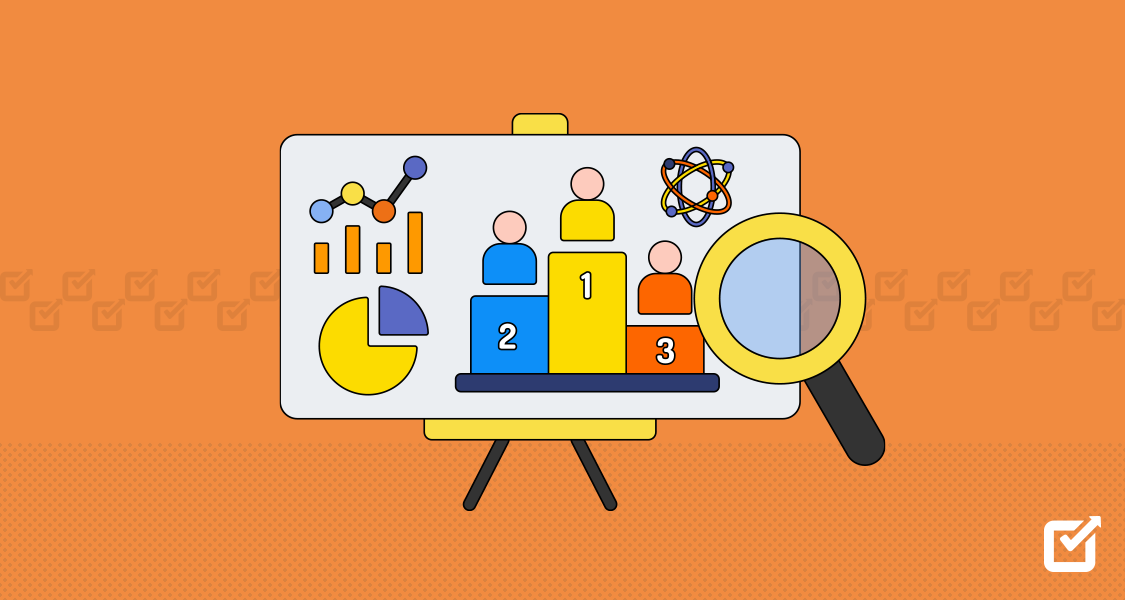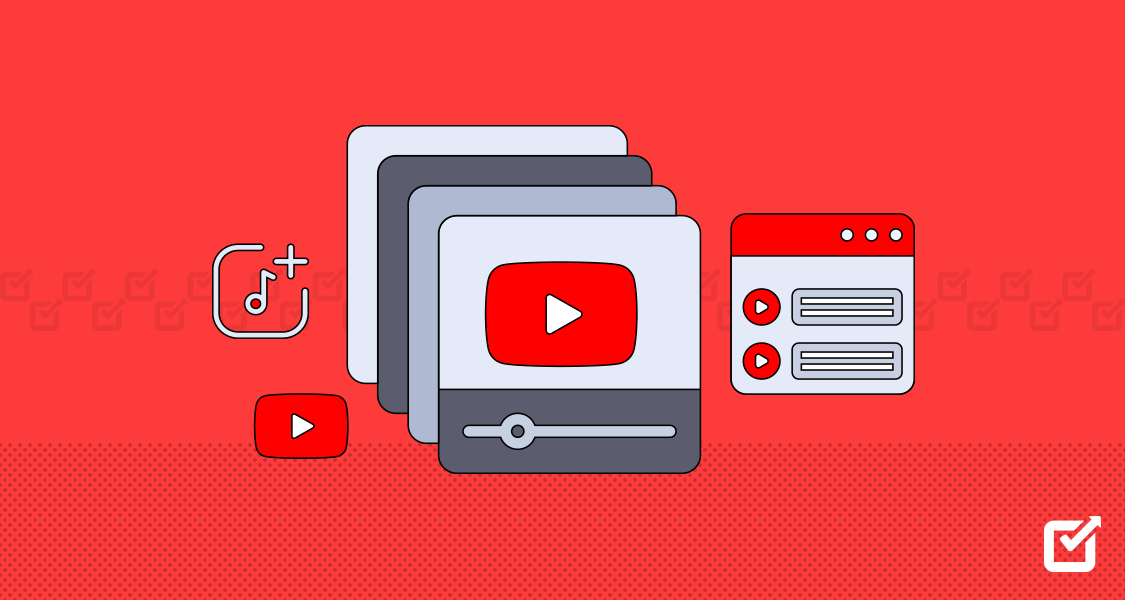Social media offers unparalleled potential for reaching your target audience. But in today’s dynamic online environment, a clear understanding of who you’re trying to connect with is critical for success.
The importance of audience targeting extends beyond simple sales figures. In fact, 88% of marketers believe that targeted display ads help improve the customer experience.
Not sure where to start? Well, in this guide, we’ll equip you with the tools and strategies to identify your ideal customer in 2024.
We’ll explore key demographics, unearth hidden online behaviors, and explore how to leverage social media analytics tools for highly focused marketing campaigns.
What Is a Target Audience?
A target audience is the specific group of consumers to whom a product or service is targeted. These individuals are most likely to show interest in your offering, making them crucial to your business’s success.
To effectively reach and engage this group, it’s essential to understand who they are, where they can be found, and their needs or desires.
Target Smarter With Social Champ!
Social Champ helps you target the right audience and achieve your goals. Schedule posts, track results, and simplify your social media marketing.
Types of Target Audience
Understanding the different types of target audiences can significantly enhance your marketing efforts. When you understand your target audience, you can craft messages that resonate deeply with specific groups.
Here are some common types of target audiences:
Demographic-Based Audience
Demographic segmentation involves dividing your audience based on measurable statistics, such as age, gender, income, education level, and occupation. This type of segmentation helps you understand your audience’s basic characteristics.
For example, a luxury car brand might target high-income earners, while a children’s toy company would focus on parents or guardians of young kids.

A snapshot of Social Champ’s technographic data on SimilarWeb Geographic-Based Audience
Geographic segmentation divides the market based on location, such as country, region, city, or even neighborhood. This is particularly useful for businesses that serve specific areas or have location-based products.
For instance, a local restaurant would target customers within a certain radius, while an online retailer might segment its audience by shipping regions.
Psychographic-Based Audience
Psychographic segmentation goes beyond demographics to consider your audience’s lifestyle, interests, values, attitudes, and personalities. This type of segmentation provides deeper insights into what motivates your audience.
For example, a fitness brand may target health-conscious individuals who value an active lifestyle and wellness.
Behavioral-Based Audience
Behavioral segmentation focuses on your audience’s actions and behaviors, such as purchasing habits, brand loyalty, usage level, and response to marketing activities. This type of segmentation helps identify patterns and trends that can inform tailored marketing strategies.
For example, a streaming service might offer exclusive promotions to frequent viewers or recommend content based on past viewing behavior.
Needs-Based Audience
Needs-based segmentation identifies groups of customers based on their specific needs or problems that your product or service can solve. This approach is particularly effective for businesses offering specialized solutions.
For instance, a company selling eco-friendly products would target environmentally-conscious consumers looking for sustainable options.
Technographic-Based Audience
Technographic segmentation considers the technology preferences and usage patterns of your audience. This includes the types of devices they use, software preferences, and online behavior.
For example, a software company might target users who frequently use mobile apps, or a gaming company might focus on console gamers versus PC gamers.

A snapshot of Social Champ’s technographic data on SimilarWeb Generation-Based Audience
Generation segmentation divides the audience based on generational cohorts, such as Baby Boomers, Generation X, Millennials, and Generation Z. Each generation has distinct characteristics, values, and behaviors shaped by the time period they grew up.
For example, Millennials are known for valuing experiences over material goods, while Gen Z is highly digital-savvy and socially conscious.
Firmographic-Based Audience (B2B)
For B2B marketing, firmographic segmentation categorizes companies based on attributes like industry, company size, revenue, and location. This helps target businesses that are more likely to benefit from your products or services.
For example, a cloud service provider might focus on tech startups and mid-sized enterprises in need of scalable solutions.
By understanding these different types of target audiences, you can create more personalized and effective marketing campaigns that speak directly to each group’s needs and preferences. This targeted approach improves engagement and increases the likelihood of conversion and customer loyalty.
Featured Article: What Is a Target Market & How to Find Yours in 2025
Target Audience vs. Buyer Persona
Understanding the difference between a target audience and buyer personas is key to effective marketing. Think of your target audience as a big group of potential customers you want to reach. This group is defined by basic traits like their age, what they earn, where they live, and what they’re interested in.
For example, a business selling fancy skincare products might target women aged 30-50 with good incomes who are into high-quality beauty products. This gives a broad idea of who might buy the products but doesn’t get into the finer details of what these potential customers really want or need.
That’s where buyer personas come in. Buyer personas are detailed profiles representing smaller groups within the larger target audience. These are based on real data about who these people are, their behavior, and what they’re looking for.
For instance, in our skincare product example, you might have “The Luxury Lover” who wants the most exclusive products, “The Conscious Consumer” who cares about eco-friendly items, and “The Skincare Newbie” looking for easy-to-use information and products.
These personas help businesses understand their customers better and craft messages, products, and experiences tailored to each specific group’s preferences and problems.
Target Market vs. Target Audience
In marketing, “target market” and “target audience” are often used interchangeably, yet they refer to different concepts. Understanding these two terms’ distinctions is crucial for developing effective marketing strategies.
Target Market
The target market is a broad group of potential customers that a business aims to reach with its products or services. It encompasses all the individuals or organizations that could potentially buy from you. This group is defined by demographics, psychographics, geographic location, and buying behavior.
Key Characteristics:
- Broad Group: Your target market includes all individuals or businesses that might be interested in your product or service.
- Segments: The target market can be divided into smaller segments based on specific criteria like age, income, lifestyle, or industry. Each segment represents a subset of the larger market.
- Strategic Focus: Identifying your target market helps in shaping overall business strategies, product development, pricing, and distribution plans.
Example:
A company selling eco-friendly cleaning products might identify its target market as environmentally conscious consumers of various ages and income levels.
Target Audience
The target audience is a more specific subset within the target market. This group comprises individuals or groups most likely to respond positively to a marketing message or campaign. Essentially, it is the audience for whom the marketing content is specifically created.
Key Characteristics:
- Narrower Focus: The target audience is a more focused group within the broader target market.
- Campaign-Specific: The target audience is often defined for specific advertising or promotional efforts. Different campaigns may have different target audiences.
- Detailed Profiles: Understanding the target audience involves creating detailed profiles with demographic, psychographic, and behavioral data specific to that campaign.
Example:
For a new social media campaign promoting eco-friendly cleaning sprays, the target audience might be young adults aged 25-35 who live in urban areas, are active on social media, and have shown an interest in sustainable living.
Essentially, the target market provides a broad framework within which you operate, while the target audience allows for precision in your marketing efforts.
Featured Article: Social Media for Business: Reshape Your Marketing Strategies in 2025
10 Ways to Determine Your Target Audience
Identifying your target audience is crucial for the success of any marketing strategy. Knowing who your ideal customers are allows you to tailor your marketing efforts and maximize engagement.
Here are ten practical ways to determine your target audience:
Analyze Your Current Customer Base
Start by looking at your existing customers to find common traits. This can include details like age, gender, location, interests, and buying habits. You can use tools like Google Analytics to track website behavior and visitor demographics.
Additionally, customer surveys can give direct feedback on why customers choose your product or service, what they like about it, and any areas for improvement.
You can also use customer Relationship Management (CRM) systems to store profiles and purchase histories, offering useful insights into patterns and preferences.
By analyzing this data, you can get a clearer picture of your current customers and what drives them, helping you tailor future marketing efforts to similar audiences.
Conduct Market Research
Spend time on market research to understand broader industry trends and consumer behaviors. This includes studying competitor strategies, reading industry reports, and following relevant publications.
Surveys, focus groups, and interviews are also effective for gathering direct feedback from potential customers about their needs and preferences.
You can also use competitor analysis to see how others in your field attract and engage their audience, revealing opportunities for differentiation.
Industry reports and publications also provide context on market conditions and emerging trends. Gathering and analyzing this information gives you a comprehensive view of the market landscape and what drives your potential customers.
Create Buyer Personas
Develop detailed buyer personas to represent your ideal customers. These personas should include demographic details like age, gender, income, and education, as well as psychographic information such as interests, values, and lifestyle choices.
Additionally, behavior patterns, including buying habits and preferred communication channels, should also be part of these personas.
Creating buyer personas helps you visualize and understand your target audience better. It ensures that your marketing efforts focus on addressing these ideal customers’ specific needs and pain points, making your campaigns more effective and personalized.
Examine Competitors
Study your competitors to see who they are targeting and how they are doing it. Analyze their marketing campaigns to understand the messages and channels they use. Look at their social media followers to see who engages with their content, and read customer reviews to understand what people appreciate or criticize.
This analysis can reveal gaps in the market that your competitors are not addressing, presenting opportunities for you to attract those overlooked segments. Understanding your competitors’ strategies also helps you refine your approach to better meet your target audience’s needs and expectations.
Leverage Social Media Insights
Use social media platforms like Facebook, Instagram, and Twitter to gather insights about your audience. Social media analytics tools can provide useful data on follower demographics, engagement levels, and trending topics.
For example, you can see the age, gender, and location of your followers and which posts they interact with the most. This information helps you understand who your audience is and what content they like.
Additionally, engage with your audience through polls, surveys, and direct interactions. Ask questions to learn more about their preferences and needs. This feedback can be very helpful in shaping your marketing strategies.
Utilize Website Analytics
Website analytics tools like Google Analytics can reveal valuable information about your visitors. Review metrics like page views, bounce rates, average session duration, and conversion paths.
Page views show the most popular pages, while bounce rates indicate where visitors lose interest. Average session duration tells you how long people stay on your site, and conversion paths show the steps visitors take before purchasing.
This data helps you understand where your traffic is coming from and which content best connects with your audience. By analyzing these metrics, you can identify areas for improvement and tailor your website to better meet your visitors’ needs.
Segment Your Audience
Segment your audience into smaller groups based on specific criteria, such as demographics, behavior, or interests. This allows you to create more personalized and targeted marketing messages.
For example, you can send tailored email campaigns to different customer groups based on their previous purchases or browsing patterns. If one group tends to buy a certain product type, you can focus your marketing efforts on promoting similar items.
Another group might respond better to discounts or exclusive offers. By segmenting your audience, you can ensure that your marketing messages are relevant and engaging, which can lead to higher conversion rates.
Monitor Customer Feedback and Reviews
Pay attention to customer feedback and reviews on platforms like Yelp, Google Reviews, and social media. This feedback gives you direct insights into what your customers think about your products or services.
Look for common themes and opinions that can help you better understand your audience’s needs and preferences. For example, if many customers praise a particular feature, you can highlight it more in marketing.
Conversely, if there are recurring complaints, you can address those issues to improve customer satisfaction. Regularly monitoring feedback lets you stay in tune with your customers’ experiences and make informed decisions to enhance your offerings.
Conduct Surveys and Polls
Surveys and polls are great tools for gathering detailed information about your audience. Use online survey platforms like SurveyMonkey or Google Forms to ask specific questions about demographics, preferences, challenges, and buying behavior.
When creating your survey, focus on the areas that will provide the most useful insights. To gather demographic information, ask about age, gender, income, and location.
To understand their preferences, you can also inquire about interests, hobbies, and values. Ask about their challenges to identify pain points your product or service can address.
Finally, understanding their buying behavior, such as what influences their purchase decisions and where they prefer to shop, can help tailor your marketing efforts.
Keep surveys short and focused to encourage more responses. People are likely to complete a survey if it only takes a few minutes. Use a mix of question types, such as multiple-choice, rating scales, and open-ended questions, to gather both numbers and detailed answers.
Regularly conducting surveys and polls can give you ongoing insights into your audience, helping you stay aligned with their needs and preferences.
Test and Refine Your Marketing Strategies
After identifying your target audience, test different marketing messages and tactics to see what works best. A/B testing, or split testing, is a method where you compare two versions of a marketing piece (like an email, landing page, or ad) to determine which one performs better.
For example, create two versions of an email with different subject lines or call-to-action buttons and send them to small segments of your audience. Measure which version gets more opens, clicks, or conversions.
This method can be used for landing pages by testing different headlines, images, or layouts to see which version leads to more sign-ups or sales. Similarly, run A/B tests on ads by changing the copy, visuals, or offers.
Continuously review the results from these tests to find out what resonates best with your audience. Look at click-through rates, conversion rates, and engagement levels.
Based on these insights, adjust your strategies to improve performance. Testing and refining should be an ongoing process, as preferences and market conditions can change over time. Regularly evaluating and adjusting your marketing strategies can ensure they remain effective and in tune with your audience’s needs.
Featured Article: The Ultimate Guide to Content Distribution in 2025
Conclusion
Understanding your target audience is more than a one-time task; it’s an ongoing journey. You need to be a detective, a listener, and a trendsetter all at once. Dig into data, listen to what people say online, and join conversations in online communities.
Learn from your existing customers and monitor your competitors. Remember to use smart SEO tactics and experiment with new approaches. By constantly staying on top of these ever-changing trends, you’ll be able to market smarter, develop products that truly resonate with your audience, and watch your plans flourish.












